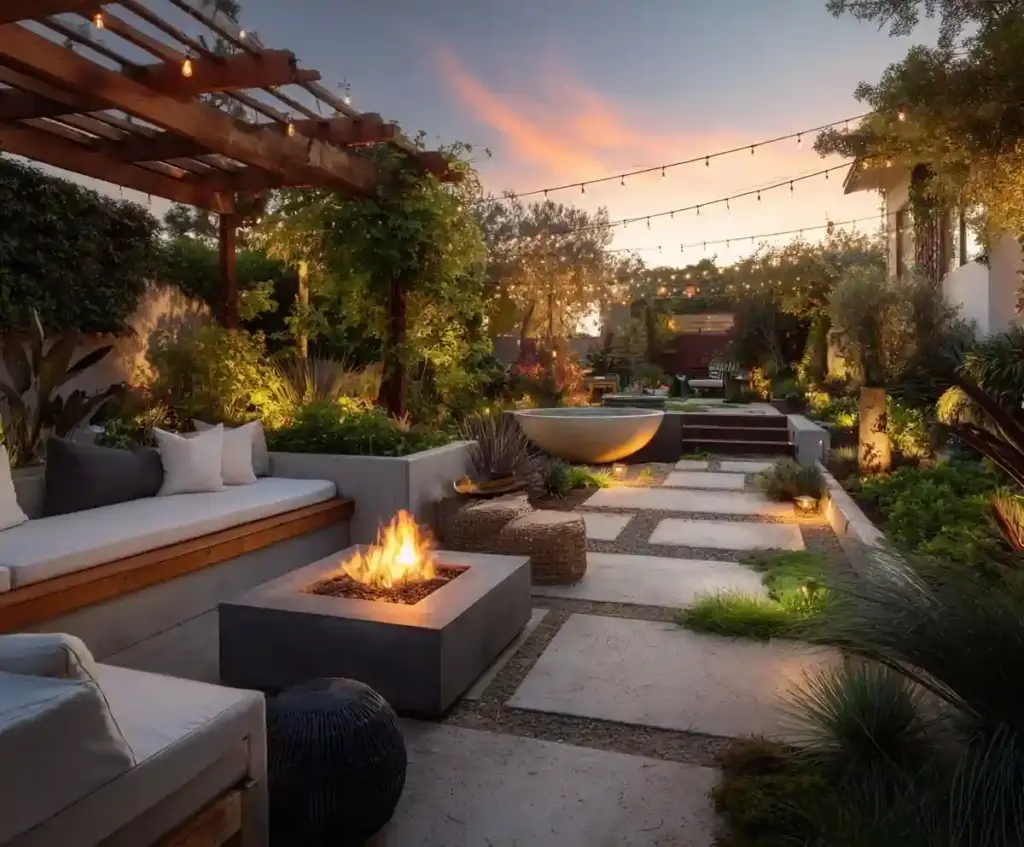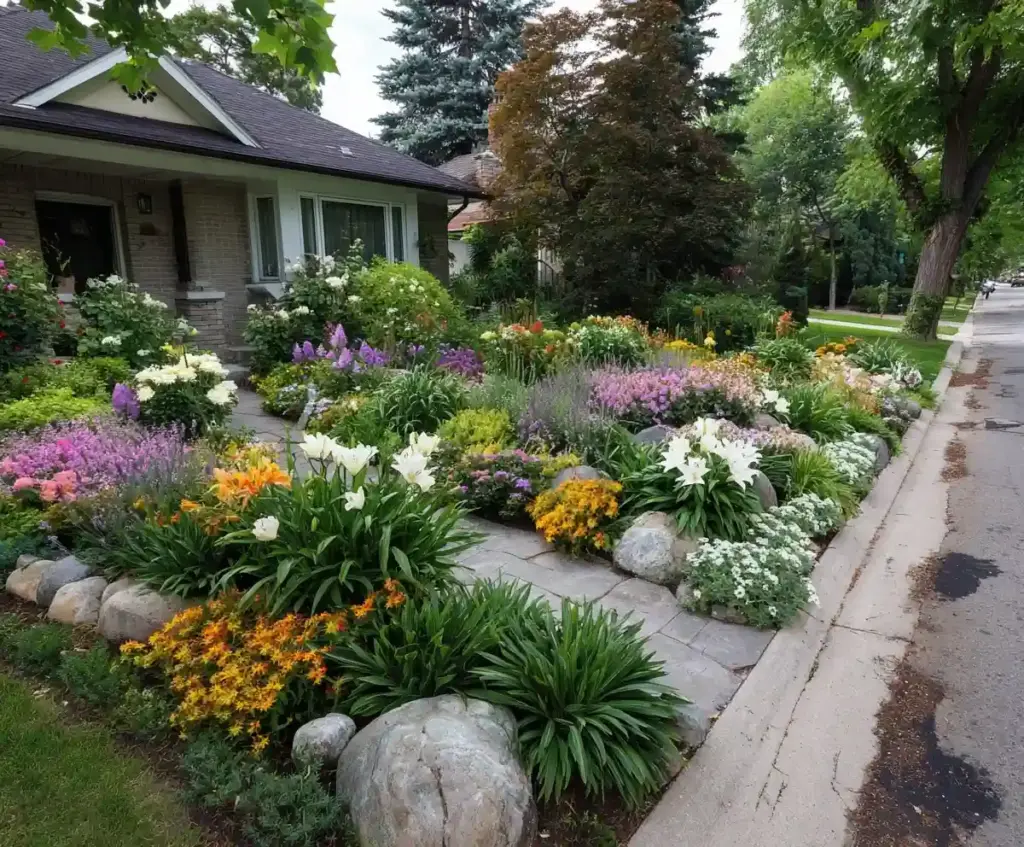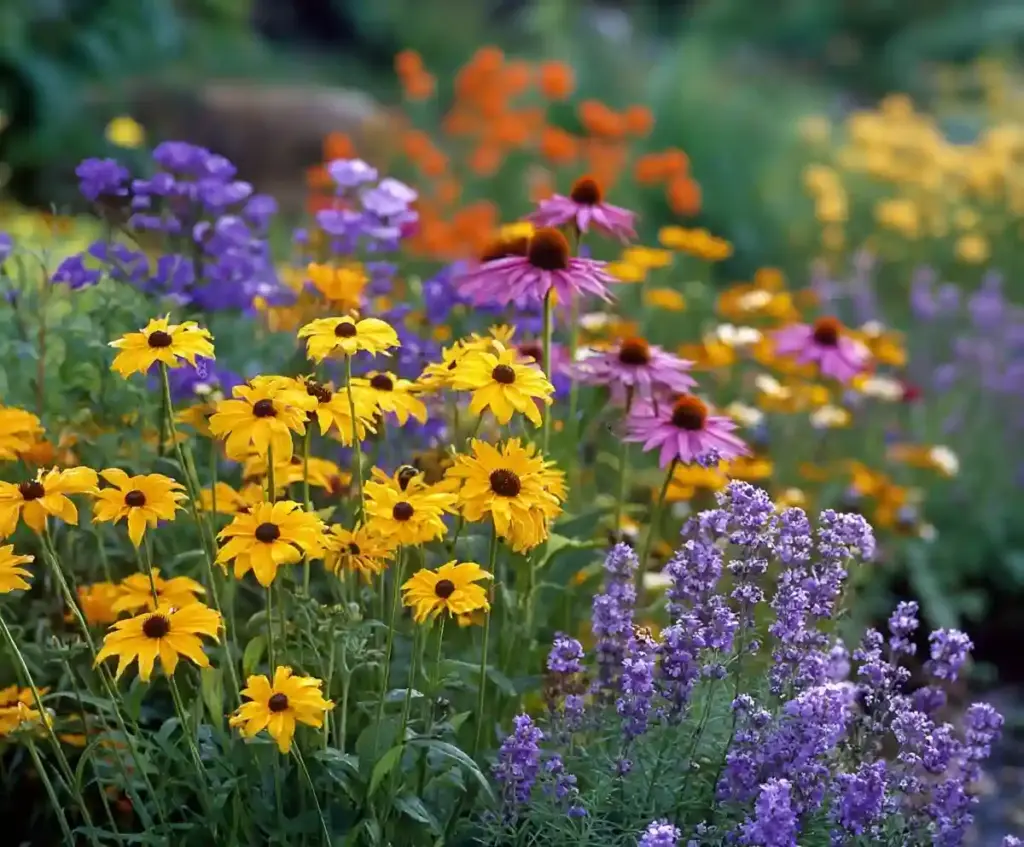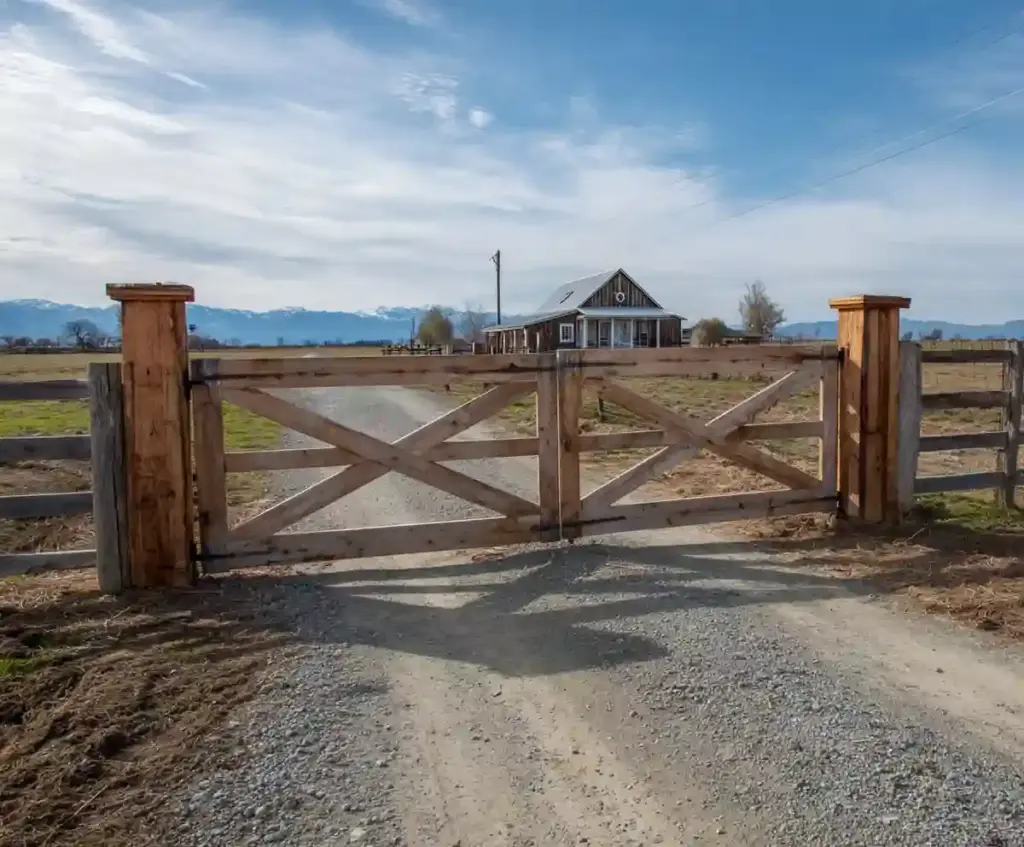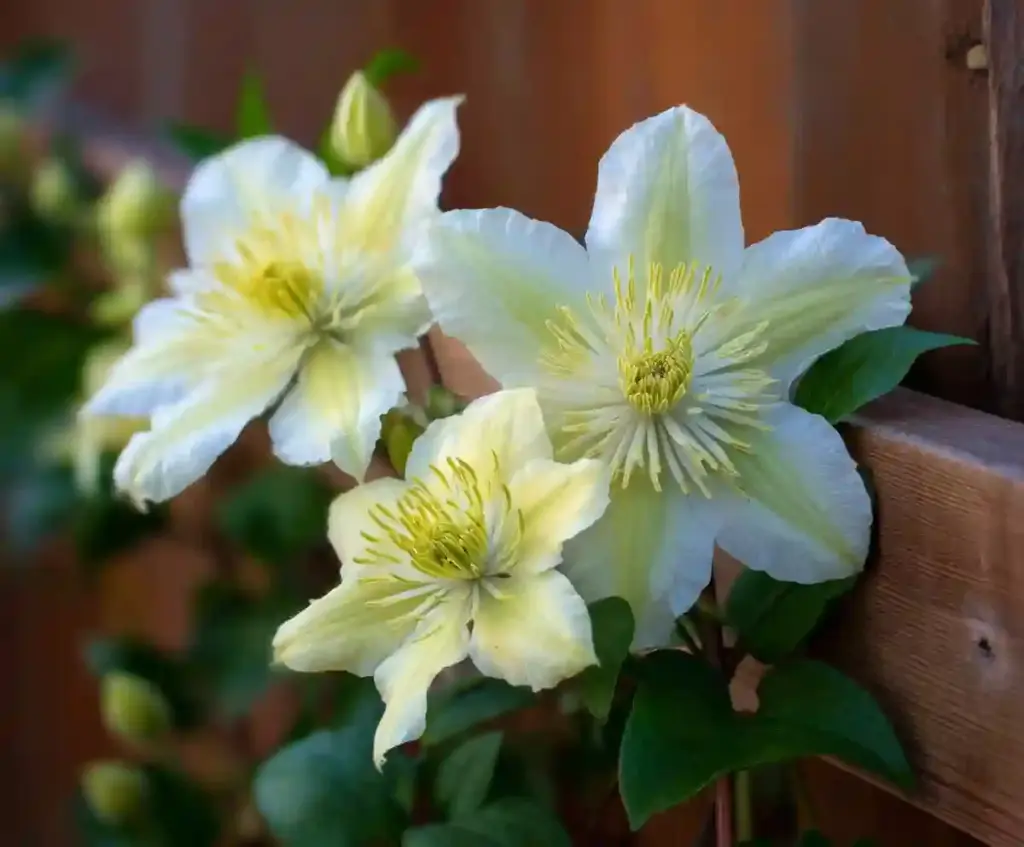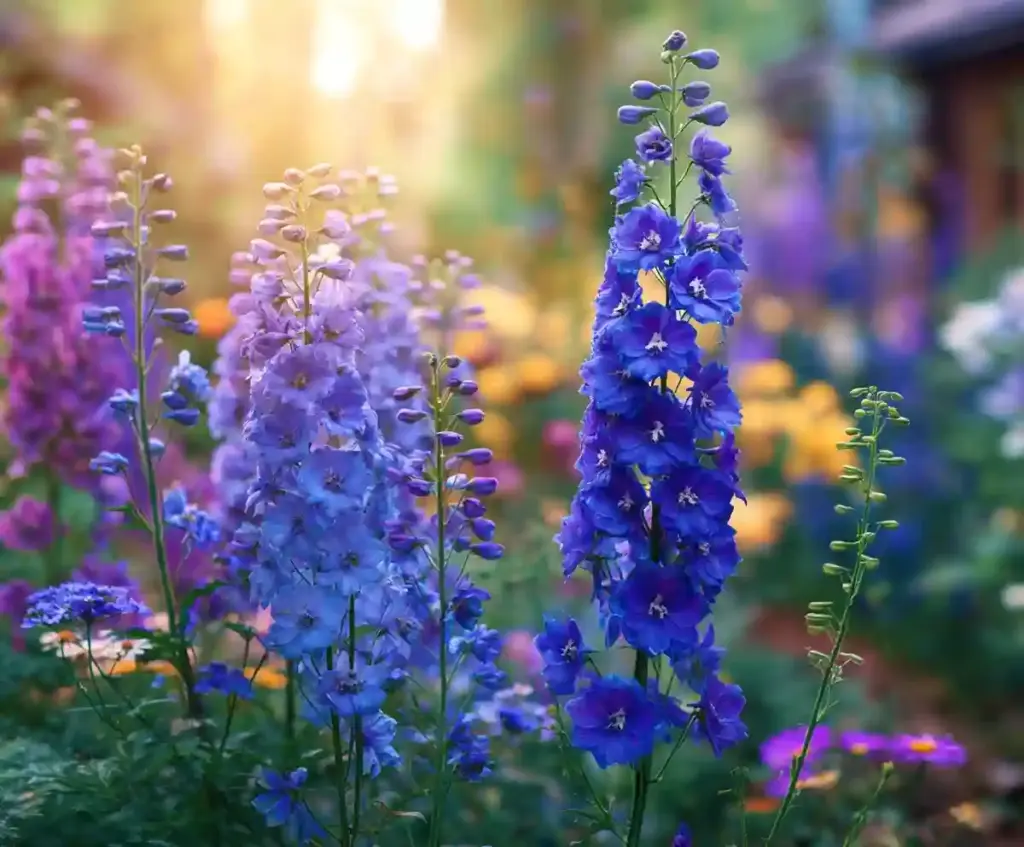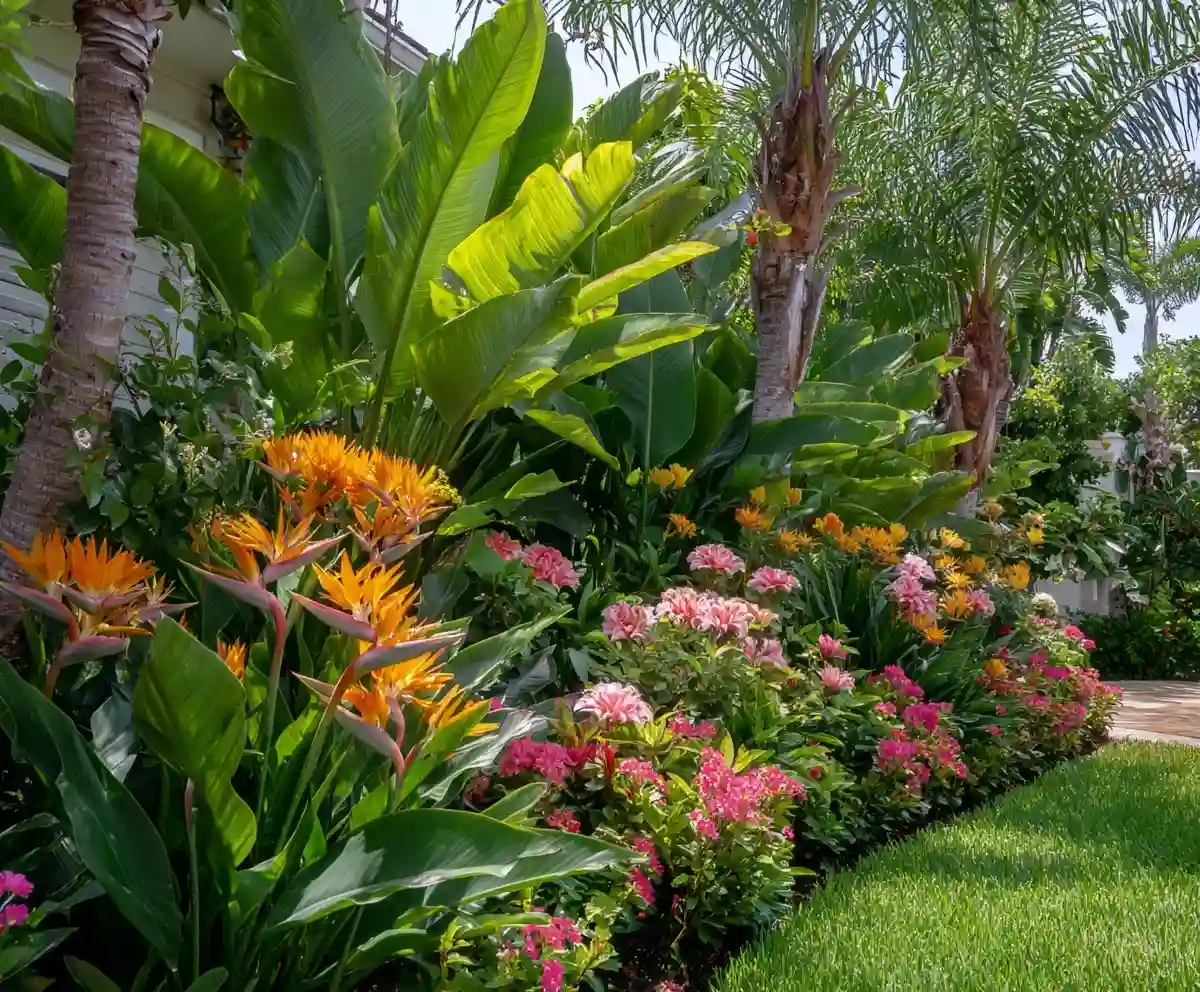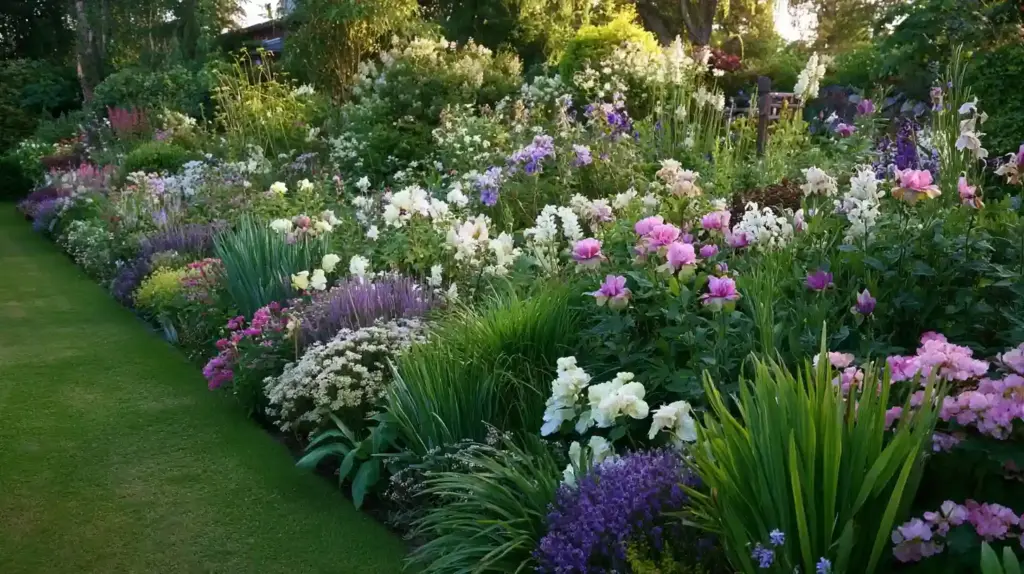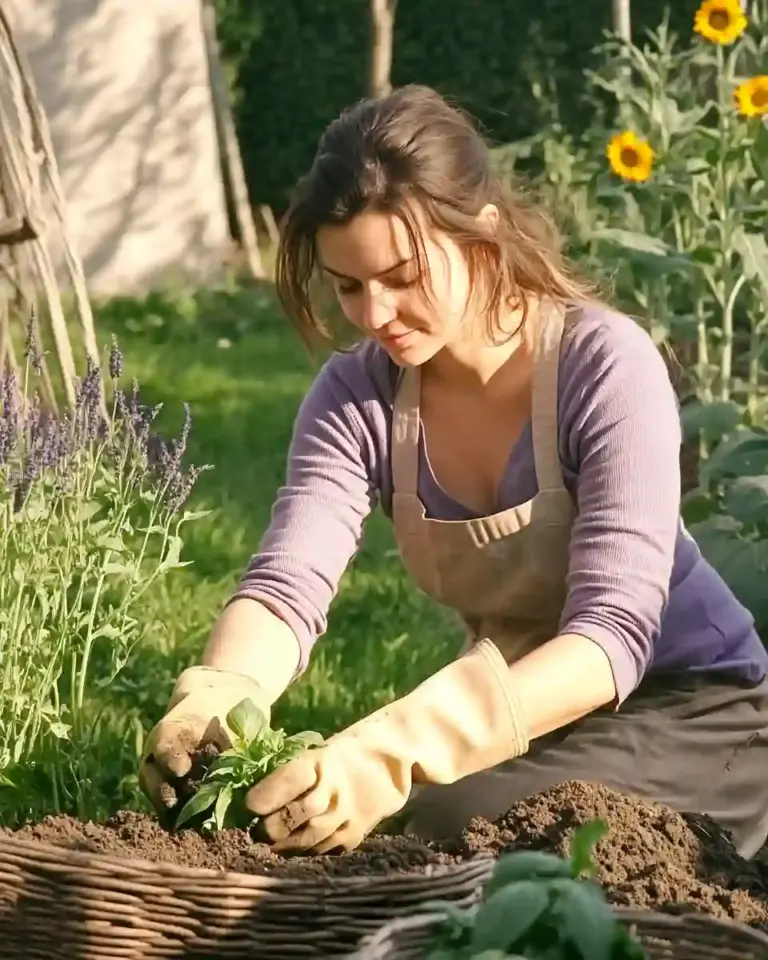Stunning flower bed ideas can completely transform the front of your home, giving it charm, color, and personality. More than just pretty decoration, a well-designed flower bed serves as a warm welcome and an expression of your style. Whether you love the relaxed beauty of wildflowers or the sculpted elegance of a symmetrical layout, there’s a flower bed design to suit every climate, budget, and aesthetic.
In this guide, you’ll discover practical and stylish ideas for creating front yard flower beds that look amazing all year long—without overwhelming maintenance. From minimalist modern arrangements to lush cottage blooms, we’ll walk through flower bed inspiration that works for beginners and seasoned gardeners alike.
Table of Contents
🌼 1. Perennial Border Flower Bed
Among the most timeless and stunning flower bed ideas, the perennial border bed remains a favorite for its consistent charm and low-maintenance benefits. By carefully layering plants by height—from tall growers in the back to compact flowers at the front—you create a cascading wall of color that greets guests with warmth and movement.
Key elements to include:
- Tall varieties like delphiniums, hollyhocks, or foxgloves in the rear
- Mid-height bloomers such as coreopsis, salvia, and rudbeckia
- Low-growing edging plants like creeping phlox or dwarf dianthus
This style looks particularly striking against brick or stone siding, where the softness of blooms balances harder architectural lines. To keep the palette harmonious, echo your home’s exterior colors in your plant choices. For example, warm-toned houses pair beautifully with oranges, purples, and golden yellows.
Maintenance Tips:
- Choose long-blooming perennials to reduce planting chores
- Deadhead flowers to encourage continuous blooms
- Mulch annually to conserve moisture and reduce weeds
With time, your perennial bed will become even more vibrant—returning each season with fuller growth and deeper character.
🌻 2. Cottage Garden Style Flower Bed

If you’re after stunning flower bed ideas that feel playful, romantic, and a little wild, the cottage garden style is your perfect match. Overflowing with layers of flowers in varied shapes and colors, this design embraces controlled chaos—bringing joyful energy to the front of any home.
What makes it special:
- Mixed plant heights and colors create a natural, painterly effect
- Bloom-heavy favorites like cosmos, snapdragons, bee balm, and zinnias add continuous color
- Fragrant herbs such as lavender, thyme, or rosemary double as edible accents
This style works especially well for homes with soft-colored siding—blues, grays, and pastels. The rich flower tones create gorgeous contrast, while the informal layout adds a lived-in charm that feels both welcoming and nostalgic.
Cottage Garden Tips:
- Allow plants to self-seed for a more natural look year after year
- Use curved borders instead of straight lines to enhance the organic flow
- Include pollinator-friendly plants to support bees and butterflies
A cottage garden isn’t about perfection—it’s about abundance. Let the plants tumble, climb, and mingle, and you’ll be rewarded with a front yard that looks and feels alive.
🌵 3. Succulent Garden Flower Bed
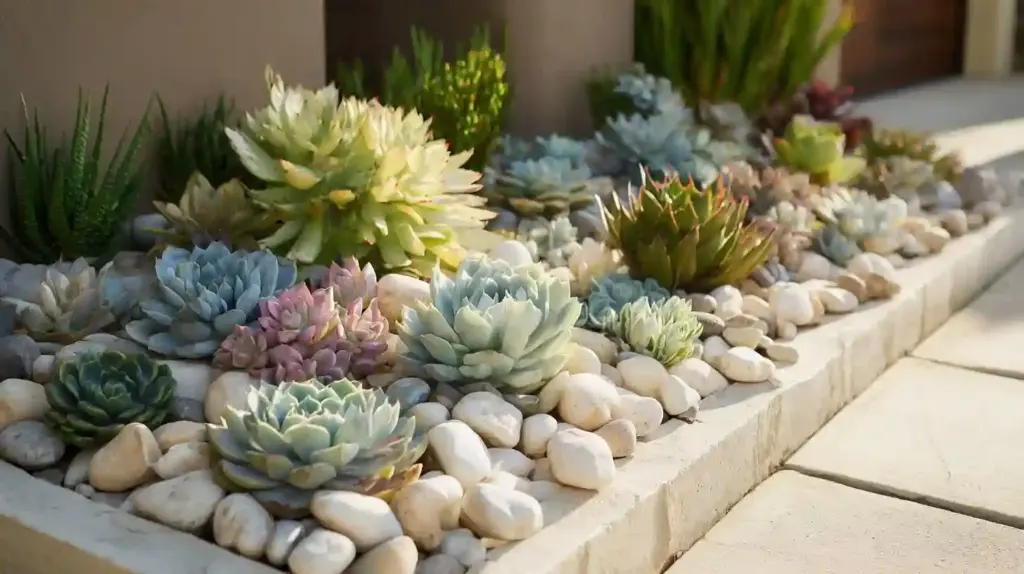
For homeowners in dry climates—or anyone who prefers easy upkeep—stunning flower bed ideas don’t get more efficient and eye-catching than a succulent garden. These drought-tolerant plants bring modern elegance and sculptural beauty to the front of your home, offering a polished look with minimal effort.
Why it works:
- Low-water needs make succulents ideal for xeriscaping
- Varieties like echeveria, sedum, and hens-and-chicks provide bold forms and unique textures
- Accent blooms such as ice plant or purslane add seasonal color without overwhelming the space
To enhance the clean aesthetic, line the bed with gravel mulch or decorative stone, which supports drainage and keeps weeds in check. This look complements stucco or contemporary architecture especially well, giving the space a fresh, design-forward feel.
Pro Design Tips:
- Use stone edging to define clean shapes
- Mix in upright grasses or small cacti for height and contrast
- Keep the color palette simple—stick to muted greens, blues, and silvers with occasional bursts of pink or yellow
Succulent flower beds prove that low-maintenance can still be visually stunning. With thoughtful placement and smart soil prep, they’ll thrive year after year with very little fuss.
🌸 4. Wildflower Meadow Flower Bed

If you’re drawn to a more natural, free-flowing look, wildflower-style beds are among the most stunning flower bed ideas for relaxed charm and pollinator appeal. These gardens feel spontaneous and full of life, constantly changing with the seasons and attracting bees, butterflies, and songbirds.
Why gardeners love this style:
- Native wildflowers like black-eyed Susans, coneflowers, and daisies thrive with minimal care
- Non-linear layouts offer visual softness and artistic unpredictability
- Seasonal variety ensures evolving beauty from spring through fall
This type of bed suits rustic, farmhouse, or cottage-style homes. It works especially well in larger front yards where you have room to let plants spread and mingle naturally.
Planting Tips:
- Mix annuals and perennials for both instant and lasting color
- Include ornamental grasses like blue fescue or bluestem to add height and movement
- Avoid overly tidy edging—embrace a slightly wild boundary
A wildflower bed isn’t just beautiful—it’s also eco-friendly, supporting local ecosystems and reducing the need for fertilizers or constant irrigation. It’s the ultimate “let it grow” garden.
🌷 5. Formal Symmetry Flower Bed
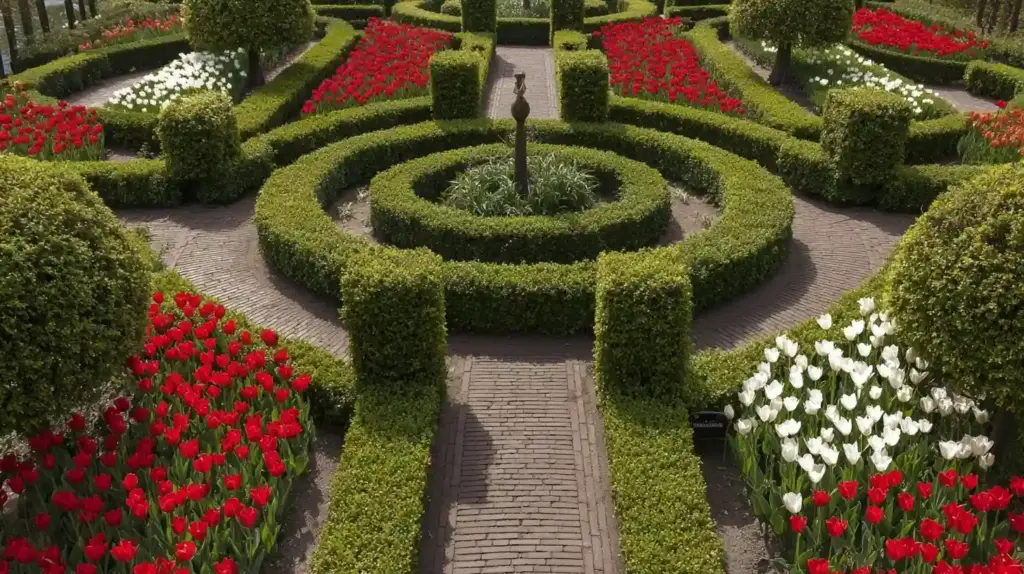
For those who appreciate elegance and structure, formal symmetry ranks high among stunning flower bed ideas for a polished front yard. Inspired by classic European gardens, this layout uses balance and repetition to create a sophisticated, organized appearance that instantly elevates curb appeal.
Key design features:
- Geometric shapes like circles, rectangles, or mirrored beds on either side of a walkway
- Color coordination, such as alternating bands of white and purple blooms
- Defined borders with materials like brick, stone, or metal edging
A central focal point—such as a dwarf topiary, urn, or even a solar light—helps anchor the space visually. This style complements traditional or colonial homes, especially those with symmetrical facades or brick exteriors.
Plant Suggestions:
- Use structured plants like boxwood or dwarf yews for shape
- Fill with symmetrical plant groupings—petunias, begonias, or marigolds work well
- Choose long-lasting annuals or low-maintenance perennials for color stability
Maintenance Note:
Formal beds require regular upkeep to retain their crisp lines. Be ready to prune, deadhead, and mulch consistently.
With its clean, classic appeal, a symmetrical flower bed speaks of intentional design—making your home look timeless and well-loved.
🌴 6. Tropical Paradise Flower Bed
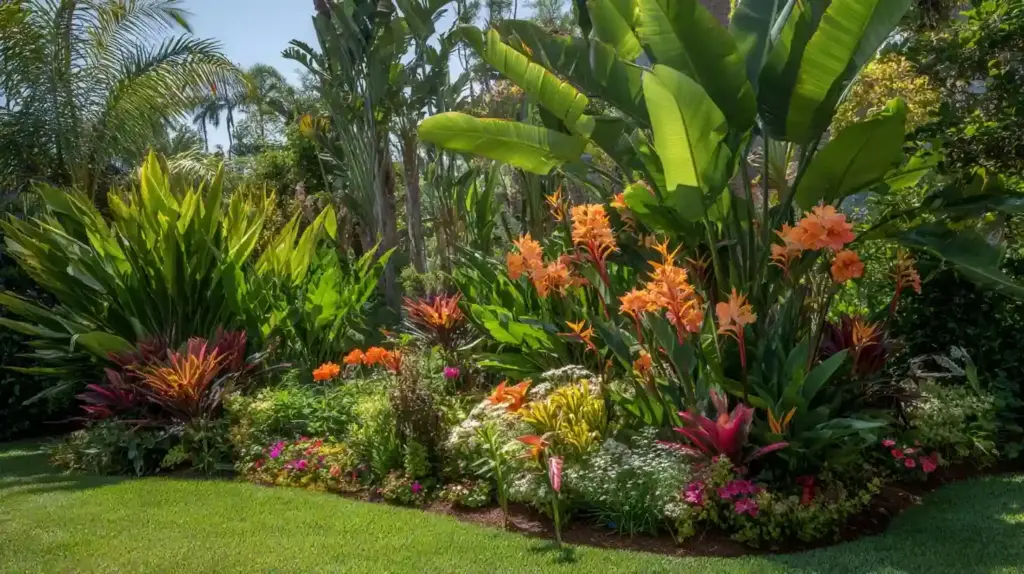
If you want to make a vibrant first impression, tropical gardens are among the boldest and most stunning flower bed ideas for the front of your house. With their oversized leaves, saturated colors, and dramatic shapes, tropical beds instantly transport your landscape to a lush, resort-like setting.
Standout features:
- Large-leaf plants like elephant ears, canna lilies, and caladiums add volume and drama
- Bright blooms such as hibiscus, bromeliads, or crotons deliver year-round color
- Layered planting creates a jungle-like effect with tiered height and dense foliage
This look pairs well with homes that have natural materials—think stone facades, dark wood, or even coastal finishes. It’s ideal for warmer climates but can also work in cooler regions using tropical-looking annuals and overwintered container plants.
Design Tips:
- Use bold color combos—lime green with burgundy, orange with hot pink—for extra impact
- Add texture with ferns or variegated ginger
- Group plants closely to create depth and a sense of lushness
Tropical flower beds feel vibrant and full of life. With the right plant choices, they transform your front yard into a cheerful, paradise-like escape—even if you’re miles from the equator.
🖤 7. Modern Minimalist Flower Bed
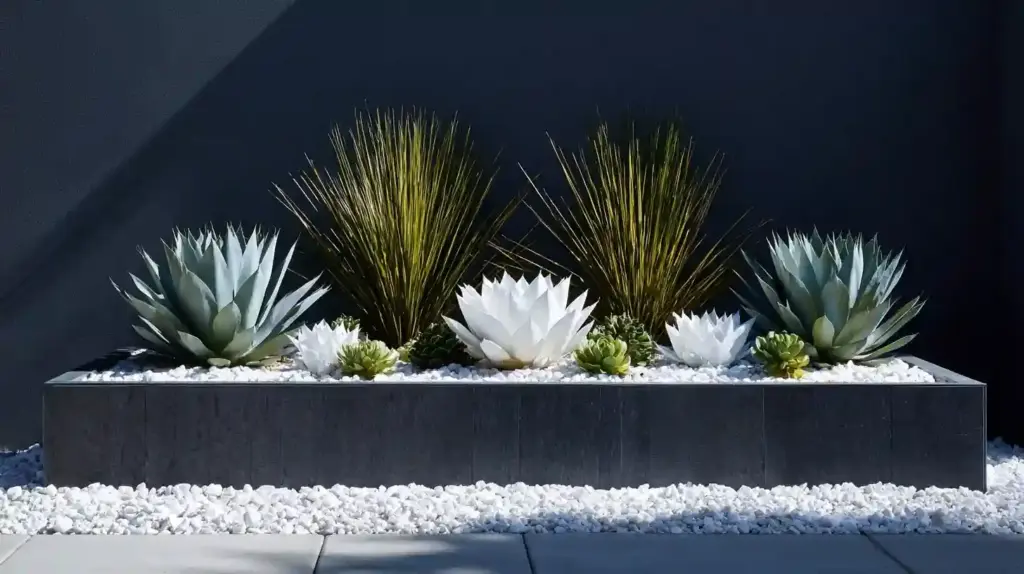
For homeowners who love clean lines and a refined aesthetic, modern minimalist designs are some of the most visually stunning flower bed ideas—without all the fuss. This style focuses on simplicity, symmetry, and a neutral color palette, making it ideal for contemporary or mid-century homes.
What defines this look:
- Geometric layouts such as long, narrow beds or crisp rectangular shapes
- Limited plant varieties—often two to three—used in structured groupings
- Contrasting textures through hardscape materials like black mulch, white gravel, or concrete edging
This design thrives on repetition and spacing. Think of architectural plants like agapanthus or ornamental grasses arranged in rhythmic clusters. Pair them with creeping groundcovers like mondo grass or golden creeping Jenny for soft contrast.
Pro Styling Tips:
- Stick to a cool-toned palette—greens, whites, silvers—for modern cohesion
- Use repetition to form patterns that draw the eye without looking cluttered
- Incorporate non-living elements like stones, lighting, or minimalist sculptures for added interest
Minimalist flower beds aren’t just stylish—they’re also practical. With fewer plant types and thoughtful spacing, maintenance is reduced while curb appeal stays high.
🪨 8. Rock Garden Flower Bed
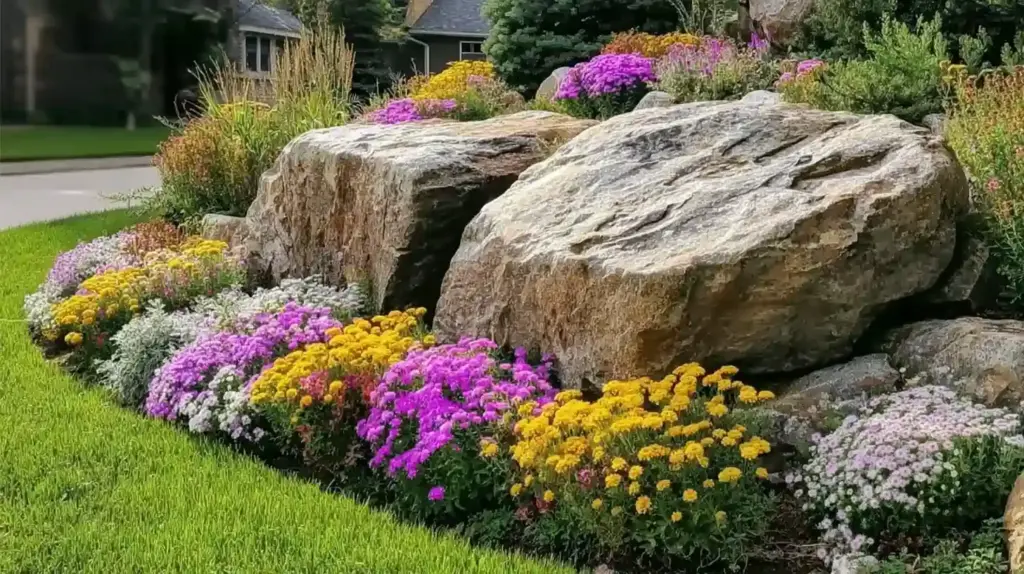
If you’re aiming for texture, structure, and year-round interest, rock gardens are among the most practical and stunning flower bed ideas—especially in dry or sloped areas. This style blends rugged beauty with hardy plantings, offering visual appeal with very little upkeep.
Core elements of a rock garden:
- Natural stones or boulders to anchor the layout and add vertical dimension
- Low-growing, drought-resistant plants like sedum, creeping phlox, yarrow, or dianthus
- Gravel or pebble mulch to suppress weeds and enhance drainage
Rock gardens are ideal for front yards where traditional beds struggle, such as slopes, rocky soil, or hot, sunny exposures. They also fit perfectly with rustic homes, cabins, and landscapes that lean toward a more natural aesthetic.
Tips for a standout rock garden:
- Use a variety of stone sizes and textures for depth and visual movement
- Layer plants around rocks to soften edges and mimic nature
- Choose bright blooms (yellows, reds, purples) to contrast with neutral stone tones
This flower bed style is highly adaptable and perfect for anyone wanting a beautiful yard with less water use and maintenance.
🌑 9. Shade Garden Flower Bed
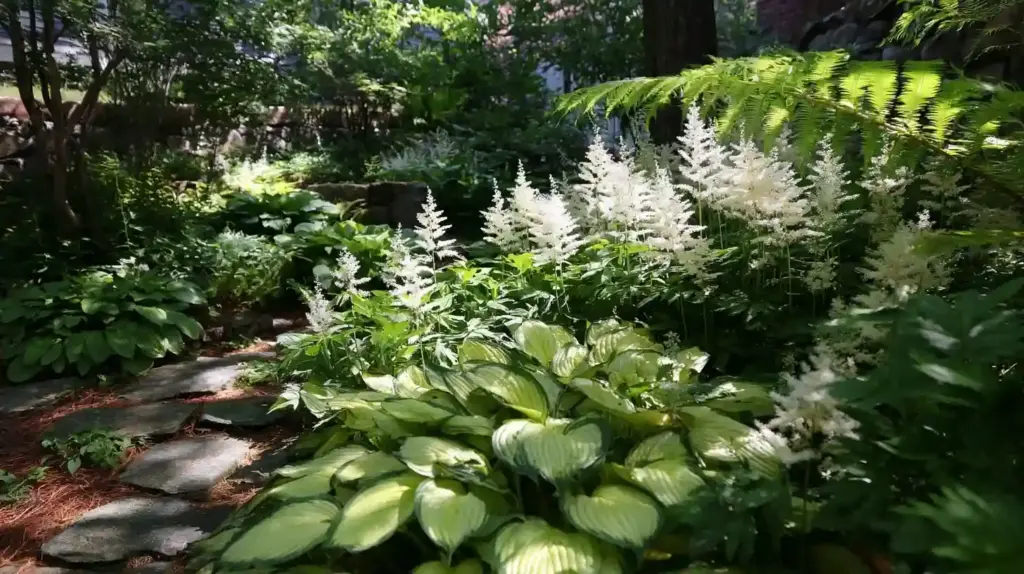
Even the shadiest corners of your yard can host some of the most stunning flower bed ideas when you know what to plant. A shade garden transforms dim, overlooked areas—like under large trees or beside porches—into cool, lush retreats full of texture and subtle color.
What makes a great shade bed:
- Foliage-first plants like hostas, ferns, and coral bells offer year-round structure
- Shade-loving flowers such as impatiens, astilbe, and begonias provide soft color pops
- Curved bed shapes help mimic the natural flow of shade and moisture
Shade beds thrive in rich, well-drained soil. They work beautifully around wraparound porches, woodland edges, or any area that sees less than 4 hours of direct sun per day.
Design Tips:
- Use variegated leaves (e.g., white-edged hostas or Japanese forest grass) to brighten dark spots
- Layer different leaf sizes and colors for visual interest without relying on blooms
- Consider a focal point like a birdbath or shaded bench to enhance charm
With its tranquil vibe and layered greenery, a shade garden offers peaceful contrast to the sunnier parts of your yard—proof that even low-light spaces can shine.
🌿 10. Edible Landscape Flower Bed
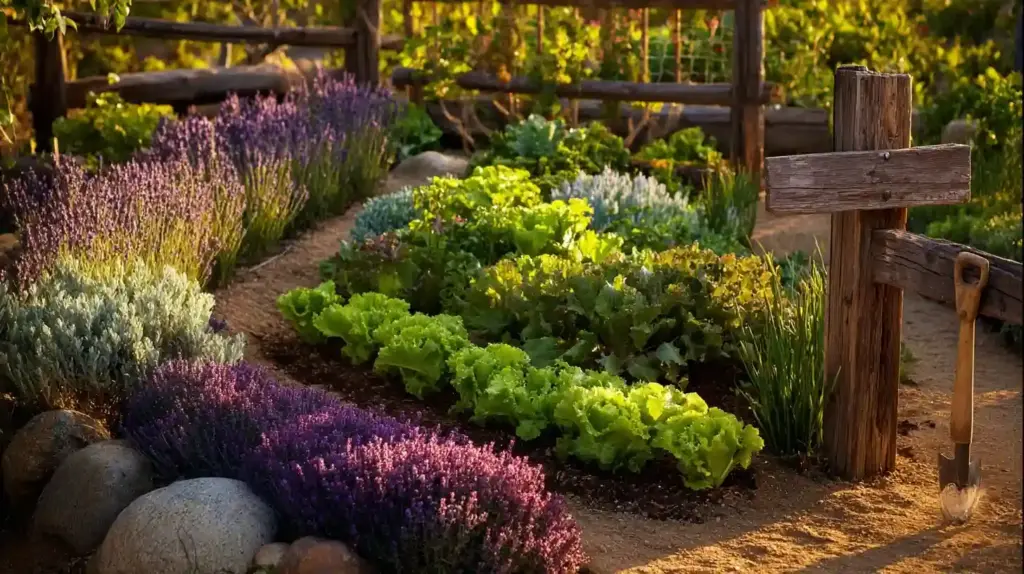
Why choose between beauty and function when you can have both? Edible landscapes are some of the most practical and stunning flower bed ideas for front yards. These beds blend ornamental blooms with herbs and vegetables, offering visual appeal and homegrown goodness right outside your door.
What to include:
- Flowering herbs like basil, thyme, lavender, and chives for both fragrance and utility
- Edible flowers such as nasturtiums, calendula, and violas for color and salad-ready petals
- Attractive vegetables like rainbow chard, purple kale, and dwarf tomatoes for vibrant contrast
Edible flower beds are especially useful in smaller yards or urban spaces where maximizing every inch counts. They look intentional, fresh, and welcoming—especially when designed with the same care as ornamental gardens.
Design Tips:
- Group edibles by color or leaf shape for a cohesive look
- Use companion planting (like marigolds with vegetables) to deter pests naturally
- Add structure with raised beds or curved borders to define the space
With edible landscaping, you don’t just grow a garden—you grow a conversation piece. Guests and neighbors alike will admire your creativity and might even ask for a sprig of mint or a kale recipe.
author:🏁 Conclusion
Creating a front yard that feels warm, welcoming, and uniquely yours starts with choosing the right flower bed layout. Whether you’re drawn to lush cottage blooms, bold tropical foliage, or the practicality of edible plants, these stunning flower bed ideas offer a style to suit every taste and climate.
From structured symmetry to wild meadows, each design brings its own charm—and can be tailored to your home’s architecture, sunlight conditions, and maintenance preferences. Before planting, consider your space’s sun exposure, soil quality, and the time you’re willing to spend on upkeep. Then, start small if needed. Even one well-planned bed can completely transform your curb appeal.
Remember: your front yard isn’t just a pass-through—it’s the first impression of your home. Let it tell a story that reflects your style, creativity, and connection to nature.
❓ Frequently Asked Questions
What’s the easiest low-maintenance flower bed for beginners?
Succulent and rock garden styles are low-water, low-effort options that still look striking year-round.
Can I mix vegetables and flowers in the same bed?
Absolutely! Edible landscaping blends form and function beautifully. Use herbs, kale, or edible flowers like nasturtiums alongside ornamental blooms.
What flower beds work well in small spaces?
Try vertical arrangements, geometric minimalist beds, or compact perennial borders to maximize tight areas.
Which designs attract pollinators?
Wildflower, cottage, and edible beds are especially good for supporting bees, butterflies, and other beneficial insects.
How do I maintain seasonal color throughout the year?
Mix spring, summer, and fall bloomers. Add evergreen shrubs or ornamental grasses for winter interest.
🌿 Love gardening inspiration? Follow me on Pinterest for bold plant ideas, tips, and seasonal color!
More Posts
